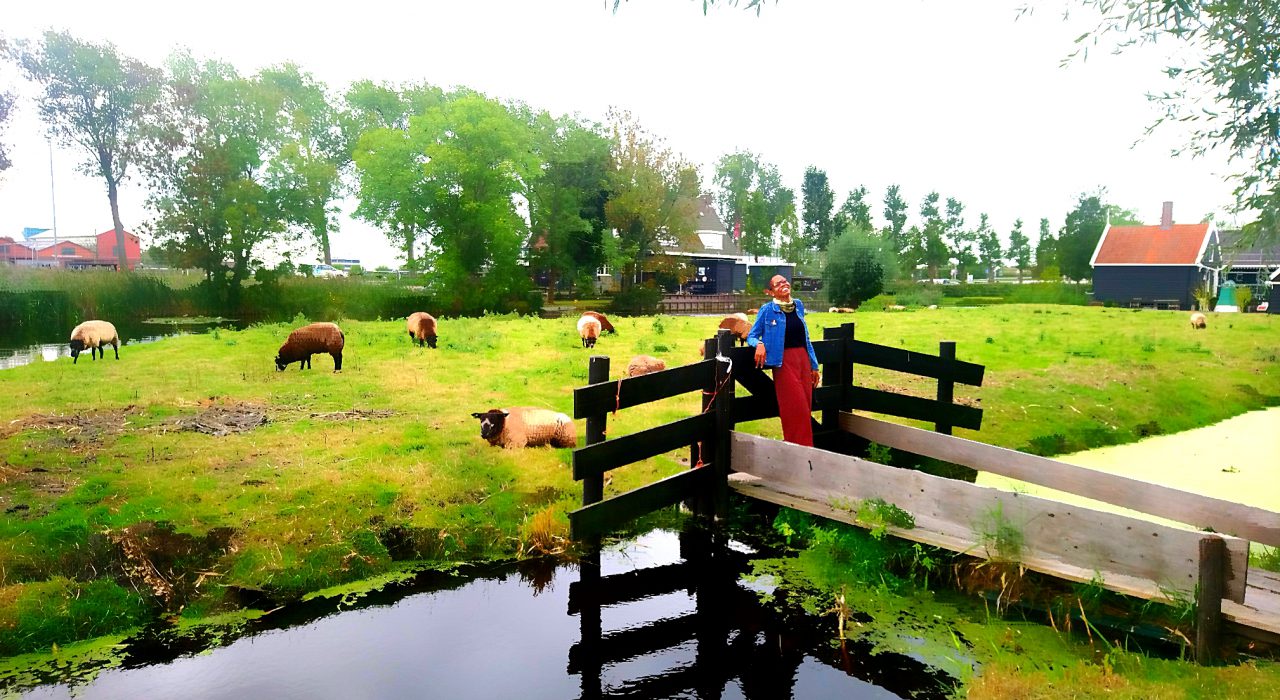*Disclaimer*
My attempt at this topic, while research, might not be the most accurate but I tried my hardest to make it as meaningful and coherent as history would allow me to. In no way is this post supposed to be condescending but rather express my point of view of certain issues surrounding those of black ancestry.
Growing up in a mostly black homogeneous country as you can imagine meant, that I dealt with less prejudice in regard to my afro features. However, it didn’t completely exclude the occurrences especially since Jamaica was once under British and Spanish rule before our independence and therefore has remnants of European beauty standards ingrained in the society.
As a result, while I lived there I still experienced prejudice occasionally where students referred to my hair as trashy as a dog’s and skin texture rough like tree bark. It wasn’t just from students who shared white ancestry but Asian and fellow black students as well. Those students were not born with that ideology, they were taught it. At that age, I hadn’t recognized it for what it was. It made me insecure as well as withdrawn even when I knew that no one should be treated that way.
It especially boggles my mind that this is still ongoing thirteen years later and still seen as acceptable by many after what history has taught us. So in this post, I wanted to discuss the historical and modern-day impacts of the prejudice of certain afro features.
The History Of Black Feature Depreciation
The depreciation of black features goes as far back as the slave trade. Slaves were physically and psychologically abused to remain subservient and any attempts to retain cultural identity was swiftly dealt with to prevent rebellions. In my opinion, the reason for this was because it was much simpler for slavers to justify their actions when it was imposed upon people who did not share their features or culture. Coupled with the fact that African cultures were viewed as primitive and that the people did not have the same means of protection such as guns made it simply easier to ignore.
You only really have to look to the unfortunate case of Saartjie Baartman, a young Khoikhoi lady who was displayed at freak shows due to her enlarged buttocks and labia. Spectators gawked, pinched and jeered at her like a pet even the “respectable”. This was despite the fact that Saartjie was regarded as quite intelligent and a fluent speaker of Khoekhoe, dutch and passable English with some french.

In fact, despite her intelligence, her features were still compared to that of an orangutan’s and after death, her body was arranged to be dissected by anthropologists. Her body parts including genitalia were then displayed as a way to introduce and normalize scientific racism as the missing evolution between apes and humans. This paved the way for the black body to be associated with words such as bizarre and monstrous and even to this day it still sadly carries weight.
Post Slavery & Societal Integration
Even after slavery had been abolished, there were still strong stigmas attached to those of African descent. There were still many people who felt that descendants of slaves should know that their place was below that of other races because they were seen closer to primates than to humans both mentally and physically. I believe that this was where the depreciation of natural features which occurred within the black race stemmed from. Even in the modern era, many people are still shocked that a species as diverse as humans can produce people with Afrocentric features. Can you just imagine the spectacle our features would have brought us back in the pre and post-slavery era?
Post Slavery era, over 11 million people struggled to find their place in an unstable, environment in which they were still looked down upon. Black features were still seen as freakish and Afro-textured hair was labelled as sheep’s wool which wasn’t “good hair”. In some cases, the hair was seen as bushy and nappy, words used by slave owners who implied that black hair needed to be tamed just as an animal’s black people were seen as. In order to conform to society, many women and men turned to bleach their skin to be lighter and painful chemical relaxers to produce the straighter locks of European standards. Many women of colour wore hair bonnets when out to disguise their hair and the introduction of heat straightening and weaves were just another way to hide the shame.
However, the tides turned around as early as the 1960s. Wearing hair in its natural Afro state became a symbol of rebellion and empowerment especially with the societal segregation during that period. It was a form of reinstating black identity, to fight against expectations, to be proud of black features once again.
Black Hair, Women And The Workplace
However, somewhere along the way, many black people became complacent due to many hardships with regard to finding employment. The famous case of Renee Rogers springs to mind who was dismissed from her job at American airlines due to wearing her hair in braids and lost the case because to style her hair in the way was a choice. This was completely bogus because to wear black hair in its natural state was an equally fireable offence due to it being deemed as unprofessional and messy. Thomas Jefferson even once quoted on the impossibility of incorporating black people into the workplace as “physical and moral differences”. It soon became more of a matter of surviving rather than defeat.
Too many black people have spoken on the difficulty of conforming to society and the prejudices that still remained despite all their efforts. Even now over 60 years later, our natural hair is still an issue for certain careers. Certain military sectors banned Afros dreadlocks and braids greater than 1/4 in diameter and deemed it unkempt. Sure they adjusted it allowing other twist hairstyles but the simple fact remained that it targeted those of the black diaspora. Even as late as 2016 a female employee of Zara, a clothing retailer, was reprimanded for her braids which she filed a complaint against. In fact, the federal court in American ruled in favour of business who turn away job applicants based on hairstyles like dreadlocks, stating that the applicants have a choice disregarding those of Rastafarian faith but that a hairstyle can insight such discrimination.
Black Hair, No Education?!
These situations not only take place at work but also in schools, a place which is supposed to encourage the new generation to be open-minded and fight prejudices. Some schools actually view dreadlocks and twists as violating their dress-codes which punishable by either isolation, expulsion or shaving the hair. Around early 2017, Deanna and Mya Cook of Mystic Regional High school were removed from their classes for wearing their hair in braids as it violated their dress code. In their defence, they brought forth evidence of white students with hair extensions and dyes which were also in violation of the dress code but the defence was not accepted as it wasn’t “obvious”.

This had upset the family who then filed a complaint against the school with the NAACP and ACLU which resulted in the school discontinuing the dress code enforcement until the following year. In fact, another situation in the same school saw one of their schoolmates removed from classes and asked to straighten her hair because its natural state was not acceptable. The fact that these cases happened as recently of 2018 is extremely shocking and concerning that children would be denied the right to education because of discrimination of their natural hair and Afro hairstyles.
Double Standards Of Ethnic Hair On White Features
Black and biracial celebrities also aren’t excluded from these issues. A notable example saw Zendaya Coleman, an actress being degraded by a Guliana Rancic, for wearing her hair in dreadlocks while complimenting Kylie Jenner, a white female for wearing cornrows, an afro-hairstyle. Her comments about Zendaya referred to her as possibly smelling of patchouli oil or weed while Kylie was seen as edgy and refreshing. Even referring back to Renee Rogers case, the jury ruled against her choice of hairstyle as they saw her as just following the newest trend set by white actress Bo Derek who wore an afro-hairstyle in the film “10”. It is like a never-ending cycle to be criticized harshly for having natural black features yet it is acceptable or unique on the features of other races.
Outside of these places, certain establishments such as nightclubs prohibits, braids, dreadlocks and cornrows. Even some countries where there are large populations of black people, these hairstyles still looked down upon. An example is of rapper Cardi B, who’s of Dominican ancestry stating that her children would not have good hair as her mother’s side of the family has messed up “nappy hair”. That statement is widely regarded by many Haitians and Dominicans as not surprising because of the European colonizing which shaped their beauty standards.
It is not only other races that seemingly view afro-features as distasteful but even within our own race, there are many prejudices which were inbred during slavery. Late 2017, an NBA star, Gilbert Arenas made some questionable remarks stating that black females with Afro features are “only cute when the lights are off”. He stated this in a tangent against the actress, Lupita Nyong’o who is very successful within her own right and is lighter in complexion than he is, showcasing his hypocrisy. It is so concerning how much presence the ideology “Black is inferior” holds over our race. Obviously, there are many who fight that mentality but it is very difficult to rid our mindsets of such poisonous ideologies when generations of our ancestors were literally beaten with it.
While the Prejudice that exists today is not on the same level, there are too many cases where our features are still highlighted in a negative light. The autonomy of social media also provides a gateway to spew ignorant statements especially on platforms such as YouTube and Twitter. Don’t get it wrong, these have promoted many great lessons but there are many who use these to further hate speeches and discrimination hiding behind “Free Speech”. Of course, everyone has the right to an opinion but it is the intent that’s the driving force.
This isn’t meant to be a lesson but rather put some perspectives into place before I explore even further. When many oppositions speak out, they don’t understand that the perceived shallowness of black issues runs much deeper. It is much more substantial than other races wearing our cultural clothes or using afro-hairstyles as a fashion. People often say black people should just get over it but many people fail to realize that it’s easier said than done. There are so many instances of genuine misappropriation take place every day with no respect for culture or history. I do believe that we can do better but I feel that many people are not willing to open their minds or hearts and that is what we need the most.
*Author’s Note*
Wow, well this was a mammoth of a post! It definitely took a lot of research and time but it was worth it. I want to expand upon topics like these to hopefully bring more understanding to issues that matter. Next time I will be going much further into business so stick around if you’re interested. Until then, thanks a lot for tuning in!
Important Resources Used In This Post
The History of Saaratjie Baartman
The Sister Circle: Black Women And Work
Mya & Deanna Cook: Black Hair In Schools
